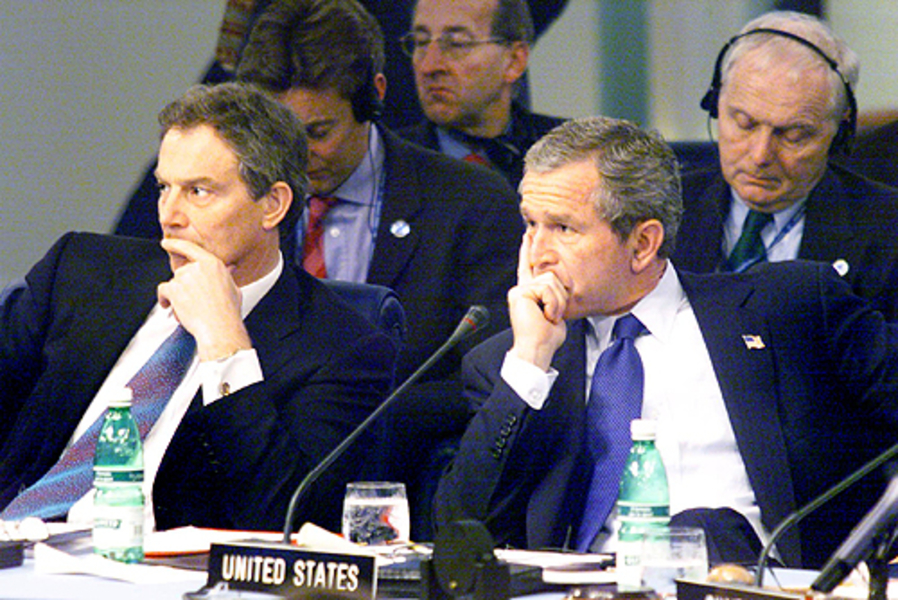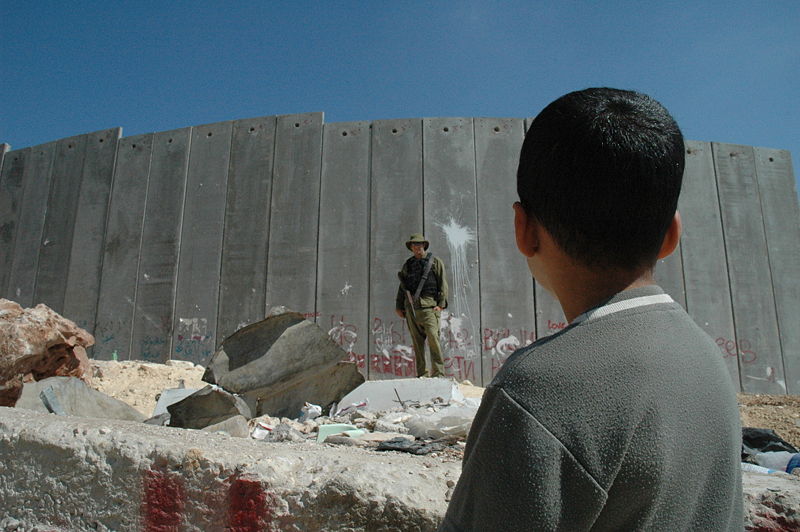States are not undifferentiated units with immutable traits. They are the product of individuals — millions or even billions of them — who have their own aspirations and desires, sets of competing expression, and deeply-held beliefs. To know how a country ‘ticks’, to predict how it might act with respect to others, one should look to the make-up of its society, the aggregation of ids and impulsions, the strands of thought and the historical intellectual doctrines that permeate distinct factions and sects contesting one another in the creation of some complete enterprise.
The dyad of upbringing and enculturation deeply influences the individual experiences of state leaders and their advisers. Individuality ineluctably shapes the methods, impressions, and ‘toolboxes’ that practitioners of foreign policy bring with them to the halls of high office. It determines the red lines that leaders hold themselves to in their dispensation of national power – what Prime Minister Tony Blair termed “cardinal beliefs” in reference to the relationship between the United Kingdom and the United States, a recognition that, “we do think the same, we do feel the same, and we have the same sense… that if there is a problem you’ve got to act on it”. Strategy and policy are not hard sciences, with formulaic logics and correspondingly predictable eventualities. Rather, they are crafted and pursued by humans, and are the outcome of the vicissitudes of human behaviours.
Those at the political helm are, of course, circumscribed by their assumptions, understandings of what it means to act in a rational and deliberate manner, and the racial, gendered, and cultural contours of their worldview. Different individuals arrive with their separate conceptions of the state, the responsibilities of civil society, and even the nature of time and agency in the realm of international affairs. The exigencies of global politics bring cultures into direct contact with one another, and not always in perfectly harmonious ways. Canada, for example, in its harrowing experience on the International Control Commission in Vietnam, was granted the arduous task of implementing the 1954 Geneva Accords alongside India and Poland, while attempting to maintain ceasefire conditions throughout the partitioned territories. Over the next eighteen years, a generation of diplomats found themselves bewildered when confronted with the foreboding jungles and pagodas of the Indochinese frontier. Their preconceptions and “mental maps,” according to scholar Brendan Kelly, were configured in certain “racialized ways in which policy-makers pictured and tried to understand a complex world spatially,” a perspective attuned more to the familiar centres of the North Atlantic than the far-flung arcana of Southeast Asia. These maps in turn impacted the way Canadian diplomats went about their work relaying information back to Ottawa and interacting with the local population.
Religion cannot be divorced from the making of foreign policy either: the persecution of Catholics in North Vietnam evoked special sympathy from Christian Western officials, and metaphors of brimstone and divine hellfire accompany today’s debates on war and intervention. The transformative nature of faith convinced President George W. Bush, in the aftermath of the 9/11 Attacks, that “his country [was] involved in a struggle against evil”, and that waging war against international terrorism was “what [he] was put on this earth for”. His interpretation of events depended on his own experience with the message of Christ, one that inspired him to break with an “aimless and alcoholic” past, giving new life and new meaning to the American national struggle in a world of manichean moral systems. Personal transformations became the resolute basis for sweeping national and international ones. Just as the errant and repentant individual can be regenerated, so too might the venial society be likewise reformed.
Tenets of faith aside, there are other entrenched ideas and ideologies that go into the forging of an individual’s external relations praxis and their methods of threat assessment. In times of unprecedented upheaval, the individuals that make and shape the world often retreat into what they know of it, falling back on more familiar generalizations. The lessons of the Vietnam War taught certain American commentators to fear overreach, including The Atlantic’s George Packer; others, particularly the neoconservatives, learned to rebuke American drift from global affairs. After 9/11, they saw heavily militarized rogue states such as Iran and North Korea to be the major threats to liberal ascendancy. It was their views on great power warfare and the necessity of realigning the Middle East, borne of their memory of the Cold War, that ultimately led the neoconservative architects of the Iraq War to blunder. Humans envisage threats as they materialize before their eyes, at which point they are to be neutralized accordingly. In the heuristic murk, the primeval brain may see brambles for bears, and thickets for tigers.
As Walter Russell Mead notes in Special Providence, certain observers have used the prominence of individuality to argue what constitutes proper “international relations” or “foreign policy” in the first measure. These critics deride the republican or revolutionary tradition of offering the wider public a say in national strategy, instead enshrining the philosophy of the continental realists who view “the best foreign policy [as] the product of a single great master: a Bismarck, a Talleyrand, a Metternich, or a Kissinger”. Here there is little place for the “vulgar and mercantile” moorings of economics and trade, or the even more innominate renderings of ‘soft power’. For some, foreign policy continues to remain a project that reached its natural apotheosis only in the 19th century European states system, marked by the alacrity and brilliance of lone statesmen, sitting in dim rooms and making vital feints up and down the cartographic gameboard.
This perspective veers dangerously close to so-called ‘Great Man’ historiography, that emphasizes the power of apotropaic agents to induce sweeping change. It must be borne in mind that individuals do not exist in a vacuum. Try as they might, no actor is totally free to enact their desires as they see fit; no amount of personal fortitude or diplomatic nous can overcome basic facts of geography or economy. An Icelandic leader of great probity and strength may never access the same breadth or depth of strategic options made available to even the most callow American President.
Still, individuality plays a decisive role in creatively accounting for these strategic resources and determining their deployment in times of crisis and decision-making. Had Al Gore been elected in 2000 instead of George W. Bush, he would have possessed the same access to data and information as the latter came to. His interpretation of the data, and the noetic pathways available to him (as formed by his own biases and dogmas), would probably have been quite different from those that President Bush eventually acted upon. In Canada, a potential Prime Minister Stephen Harper may have approached the Iraq issue in a manner quite unlike actual Prime Minister Jean Chrétien did in 2003, drawing instead on conservative cultural values and the perceived necessity of Anglophone unity in his concept of foreign policy. Innumerable factors and stresses are involved in the making of a leader, going on to then influence their political mandate and their incredibly specific ‘way’ of being in the world.
There is, then, a symbiotic relationship between the statesperson and history. Defined by particular localities and spanning time, it is marked by an inherited tradition or a school of thought that is sustained but also modulated by successive generations of political leadership. It is in this sense that one can decipher a revolutionary instinct in the foundational expression of “American Internationalism,” one that stretches back to Washington’s crossing of the Delaware and the subsequent ripples of his War of Independence against the British monarchy. This patrimony explains how the United States is able to conceive of itself as an anti-colonial or reformist power (even as it dominates the international system), providing an ideological thread-line that extends through to the Bush and Obama administrations’ missions to zealously export democracy elsewhere. In foreign policy, leaders are not only burdened by the immediate realities of a protean environment, but also by the weight of the past and the sense that their undertakings are guided by history and exist within established frames of referential propriety.
States and their respective praxes can therefore be said to exist as the sum of their citizens’ collective idiosyncrasies, particularly so in the case of democratic governance whereupon the leader and their cabinet must seek the mandate of the public. Individuals that rise to the top of their respective societies represent an accretion of ids, egos, and impulses, motivated by an experiential approach towards the creation of their unique brand of foreign policy. Statecraft is an entirely human phenomenon, insofar as humans can exist within and impose structures of engagement upon one another; as such, it will always be informed and influenced by individual natures, nescience, and styles of interaction and interpretation.
In international relations, personalities and the ideas that animate them account for the behaviour of states that no structuralist political or economic theory can fully capture. For practitioners of statecraft, the character of the person in front of them should matter. They ought to place greater stock in familiarizing themselves with the genomes, the mythologies, and the civilizational schema from which leaders of powerful states are inculcated. The relationship between states thus mirrors the relationship between their peoples, embodied in the traits and characteristics of a select, and hopefully representative, few individuals at or near the ‘top’.
Featured Image: Airbase Pratica di Mare, Italy. British Prime Minister Tony Blair and US President George W. Bush at a session of the NATO-Russia Council. (28 May 2002) via Wikimedia Commons. Licensed under CC BY-SA 4.0. Photo courtesy of the Russian Presidential Press and Information Office.
Disclaimer: Any views or opinions expressed in articles are solely those of the authors and do not necessarily represent the views of the NATO Association of Canada.




